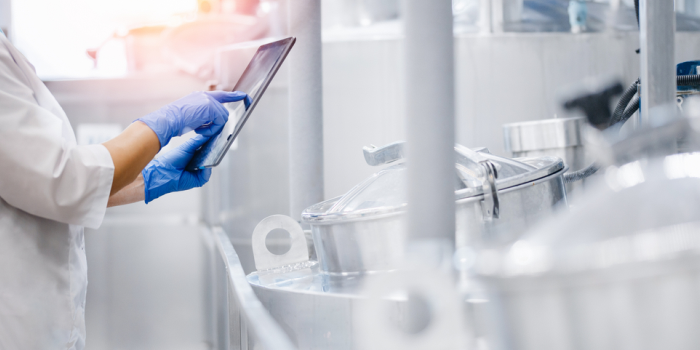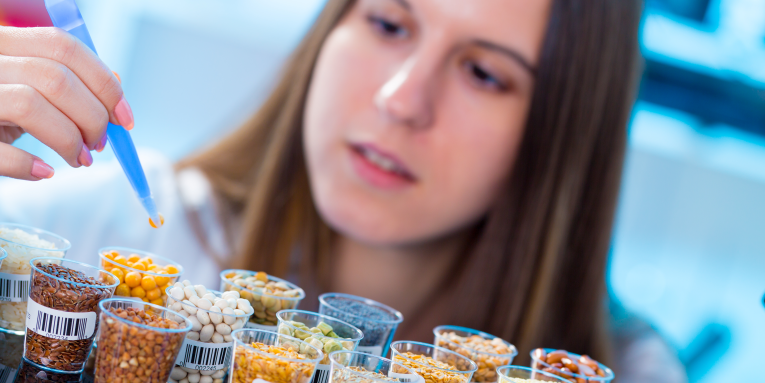Ensuring Optimal Manufacturing of High-Quality Products With Digital Process Control
Today, more than ever, a pivotal aspect of intelligent food safety must focus on prevention, creating a traceable food chain, and promptly providing accurate information to consumers. As a business, you face external pressures such as rising energy and raw material costs, increased regulatory requirements, and the need to increase productivity while reducing costs. Viable solutions to enhance performance, maintain competitiveness and drive your business forward are in great demand.
Food and beverage manufacturers must learn to incorporate digital process control strategies into their food safety practices fulfilling regulatory and non-regulatory compliance requirements, capturing maximum efficiency, and preventing material loss. The Food and Agriculture Organization estimates that a third by weight of all food produced in the world gets lost or wasted globally, approximately 1.3 billion tons per year. Food loss can occur at every stage of the food value chain, from initial agricultural production to the consumer level. The production stage represents 24-30% of global food loss and waste. An intelligent control system minimizes energy and raw material costs while ensuring optimal manufacturing of high-quality products.

Food and beverage manufacturers must develop control strategies that consider unexpected variations during production to mitigate risks impacting food safety and quality. Manufacturers should use in-process control strategy elements to maintain processes within a state of control, detect temporary interruptions, and isolate non-conforming materials from the system. An effective monitoring program can help reveal changes in the properties of high-risk raw materials and reduce their impact on the manufacturing process and the finished product. The ability to control and monitor processes efficiently reduces waste, improves production reliability, and provides the continuous data required to meet regulatory standards.
Compliance Requirements
Preventive controls are steps domestic and foreign food facilities must take to reduce or eliminate food safety hazards. The Food Safety Modernization Act (FSMA) of 2011 gives the Food and Drug Administration (FDA) legislative authority to mandate comprehensive, science-based, and preventative controls governing the safe storage, handling, and preparation of food throughout the supply chain. The rule also integrated Current Good Manufacturing Practice (CGMP) requirements. Compliance with food safety regulations has never been more challenging. 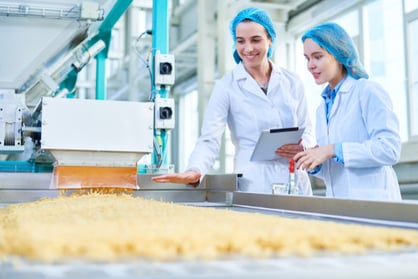 To meet compliance requirements, food and beverage companies must collect and maintain up-to-date documentation of their food safety plans. In addition, maintaining traceability is essential to implementing effective recall programs. According to the legislative requirements, the food safety plan should include the following:
To meet compliance requirements, food and beverage companies must collect and maintain up-to-date documentation of their food safety plans. In addition, maintaining traceability is essential to implementing effective recall programs. According to the legislative requirements, the food safety plan should include the following:
Hazard Analysis
Identifying known or potential biological, chemical, and physical hazards and determining the need for preventive controls for recognized hazards must be delineated.
Preventive Controls
If the hazard analysis identifies a hazard that requires preventive control, food and beverage manufacturers must develop and implement a control that minimizes or prevents the hazard significantly.
Examples of preventive controls include:
Process Controls
These are procedures and practices that ensure the achievement of control parameters. Process controls can include cooking, refrigerating, pasteurizing, and acidifying foods. They must consist of parameters and values (e.g., critical limits) as appropriate to the nature of the applicable control and its role in the facility's food safety system.
Food Allergen Controls
These are procedures, practices, and processes to control allergen cross-contamination within a facility and protocols that ensure the correct labeling of all food allergens.
Sanitation Controls
These procedures, practices, and processes guarantee the facility is maintained cleanly to control hazards such as environmental pathogens. Environmental monitoring is required if contamination of a ready-to-eat food with an environmental pathogen like Listeria monocytogenes is a hazard requiring a preventive control.
Associated requirementsd for sanitation controls include, as appropriate, monitoring, corrective actions, verification (including envrionmental monitoring for an environmental pathogen or suitable indicator organism as necessary), and records.
Other Controls
These preventive control measures are not processes, food allergens, or sanitation controls but are necessary to safeguard hazards from occurring.
Risk-Based Supply Chain Program
Food and beverage manufacturers that identify a hazard related to ingredients received from a supplier rely on that supplier to control the identified risk. Implementation of a supply-chain program with appropriate verification activities is a requirement for facilities that produce food and beverages. The supply chain program should include:
-
Using approved suppliers
-
Determination of appropriate supplier verification activities and frequency of thos activities. They may include:
-
Sampling and testing of raw material
-
On-site audit
-
Review of supplier's relevant foo safety records
-
Conducting and documenting supplier's verification activities
-
Recall Plan
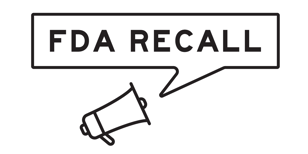 Suppose the hazard analysis identifies a hazard that requires preventive control. In that case, a written recall plan must be in place that elaborates procedures that describe the steps to perform and, at minimum, assigns responsibility for:
Suppose the hazard analysis identifies a hazard that requires preventive control. In that case, a written recall plan must be in place that elaborates procedures that describe the steps to perform and, at minimum, assigns responsibility for:
-
Notifying the direct consignees of the food recall, including how to return or dispose of the affected food
-
Informing the public about hazards in the food
-
Conducting effectiveness checks
-
Appropriately disposing of the recalled food product
Oversight and Management of Preventive Controls
Once a facility has identified a preventive control for a hazard, it must ensure the achievement of controls using the following actions:
Monitoring
These assure the consistent, appropriate performance of preventive controls. For example, monitoring a thermal process to eradicate pathogens would include recording and documenting temperature values.
Corrections
These are actions taken to identify quickly and correct minor deviations that occur during food production.
Corrective Actions
These include identifying and correcting a problem, implementing a preventive control, reducing the likelihood the problem will recur, evaluating affected food for safety, and preventing adulterated food entrance into commerce.
Verification
These activities are required to ensure that preventive controls are consistently implemented and minimize hazards effectively. Examples of verification activities include scientifically validating process preventive controls to ensure that the control measure can effectively control an identified risk and calibrating (or checking the accuracy of) process monitoring and verification instruments such as thermometers. Verification activities also include reviewing records to ensure monitoring and corrective actions (if necessary) performance.

Product testing and environmental monitoring are also verification activities required as appropriate to the food, facility, nature of the preventive control, and the role of that control in the facility's food safety system. Environmental monitoring is required if the contamination of a ready-to-eat food with an environmental pathogen is a hazard the facility identified as requiring a preventive control.
Keeping Up Through Digital Process Control
Navigating the regulatory compliance process can be daunting even for food companies with a robust workforce. Tight control of manufacturing processes ensures that food and beverage businesses adhere to regulatory standards while reducing and mitigating risks that could comprise food safety and quality, company revenue, and reputation. Digital process control solutions enable companies to accomplish their food safety and quality objectives in addition to conforming with regulatory mandates through continuously monitoring processes in real-time.
Digital process control is process control that uses computers to monitor machines and environmental conditions on the manufacturing line. There are different types of digital process control, for example, batch control, continuous control, discrete control, and statistical process control. Switches, sensors, and transmitters are hardware devices utilized by digital process control to measure essential process variables and events. These devices produce signals sent, usually by wires, to a controller. The signals from sensors and transmitters represent a process's measured variables, also called process variables (PV). Signals containing process information encoded in electrical wires, pneumatic lines, and hydraulic lines, routed between tangible hardware devices. Computer software and controllers execute algorithms and mathematically manipulate the numerical values representing the control and process variable signals. Control logic is the algorithm or sequence of step-by-step operations that determine when and how controller outputs change the control variables based on information provided by sensor inputs from the process variables.
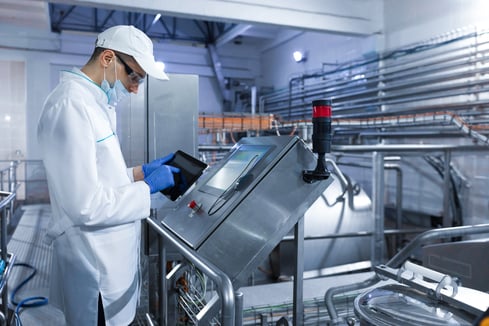 There are numerous reasons to adopt food process control solutions. These include:
There are numerous reasons to adopt food process control solutions. These include:
Processing Parameter Optimization
To consistently produce high-quality finished food products requires stringent control of processing parameters. Digital processing solutions empower food and beverage companies with real-time monitoring capabilities that reduce non-conforming products, reduce food loss and waste, and improve product yield and profit margins. Customers want consistent quality in the food products they purchase. Digital process control solutions can optimize food production processing parameters to maintain the desired quality specification, despite variability in raw materials or supply disturbances.
Improved Food Safety
Food processors aim to reduce microbial load and ensure the final food product is safe. Stringent control of critical control points (CCP) in real-time during the production process helps prevent catastrophic events and assists quality personnel in responding to and making decisions faster. Digital processing solutions make generating CCP for audit and inspection purposes easier, thereby meeting regulatory obligations. Most importantly, they help in the protection of consumers and brand equity.
Optimized Clean in Place (CIP)
Real-time monitoring and handling of CIP recipes enable optimization of programs that ensure sanitary conditions maintenance during the production process. Effective deployment of digital process controls can lead to reduced time lost in executing CIP protocols, reduced energy needed for performing CIP, and reduced the amount of cleaning agents used during production facility cleaning. All these lead to an improved hygienic food production environment and bolster the sustainability initiatives of the food and beverage companies.
Novolyze offers turnkey compliance solutions for process control that encompass all parameters in one program, including validation, verification, and dynamic monitoring.

